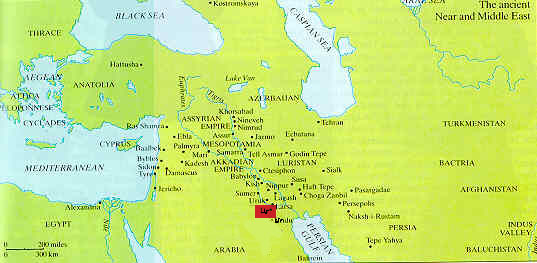The Royal Tombs of Ur
History of Art 101 Recitation Two: Week of September 16

The Ancient Near East and the City of Ur
Sir Leonard Woolley directed archaeological excavations at Ur
(in modern day Iraq) between 1922 and 1934. Woolley's widely read Ur of
the Chaldees: A record of seven years of excavation, published in 1929 and
revisited in 1954, described his findings in an accessible and informative manner
embraced by both specialists as well as lay-persons. Woolley offered
interesting if not always accurate interpretations of the physical
evidence. Woolley, the son of a clergyman, considered following in his
father's footsteps at a young age. The archaeologist often turned to the Bible for comparisons
and analogies to his site, not an uncommon practice for many learned
people of Woolley's day. Although current scholarship has yet to prove
or disprove whether Tell el-Mukayyar (the current Iraqi name for
Woolley's site) is or is not the famed birthplace of Abraham the first
Jew, Woolley argued strongly for the connection of his archaeological find to the location discussed in chapter 14 of Genesis
11:29-32. (Moorey, P.R.S. Ur of the Chaldees: A Revised and Updated
Edition of Sir Leonard Woolley's Excavations at Ur. Ithaca, New York:
Cornell University Press, 1982.)
Toward the end of the nineteenth century, the University of Pennsylvania
began paying for expeditions to Ur. No published material appeared
until after World War II. In 1922 Dr. G.B. Gordon, director of the
University of Pennsylvania Museum
approached the British Museum
and together the two institutions funded a joint expedition lasting 12
seasons under the direction of Sir Leonard Woolley.
Click on the city of Ur for information about Sumerian
civilization, burial practices, and the University's role in the
excavation and anaylsis of this ancient Near eastern capital city.

